Review by Pete Vack
We have added the previously published Borzou Sepasi story at the end of this review for your information.
“This is the car that I wanted, and I don’t want anything else!” exclaimed the Crown Prince of Persia, referring to what was to be his first car, given to him for his 13th birthday in 1932. The Hispano Suiza J12 Saoutchik was stunning. A chauffer would drive young Mohammad Reza Pahlavi to his exclusive boarding school in Switzerland in the new Hispano. As the story goes, the Crown Prince hoped he would be received as the royalty he was, but his classmates were far more impressed with the car than its royal occupant.
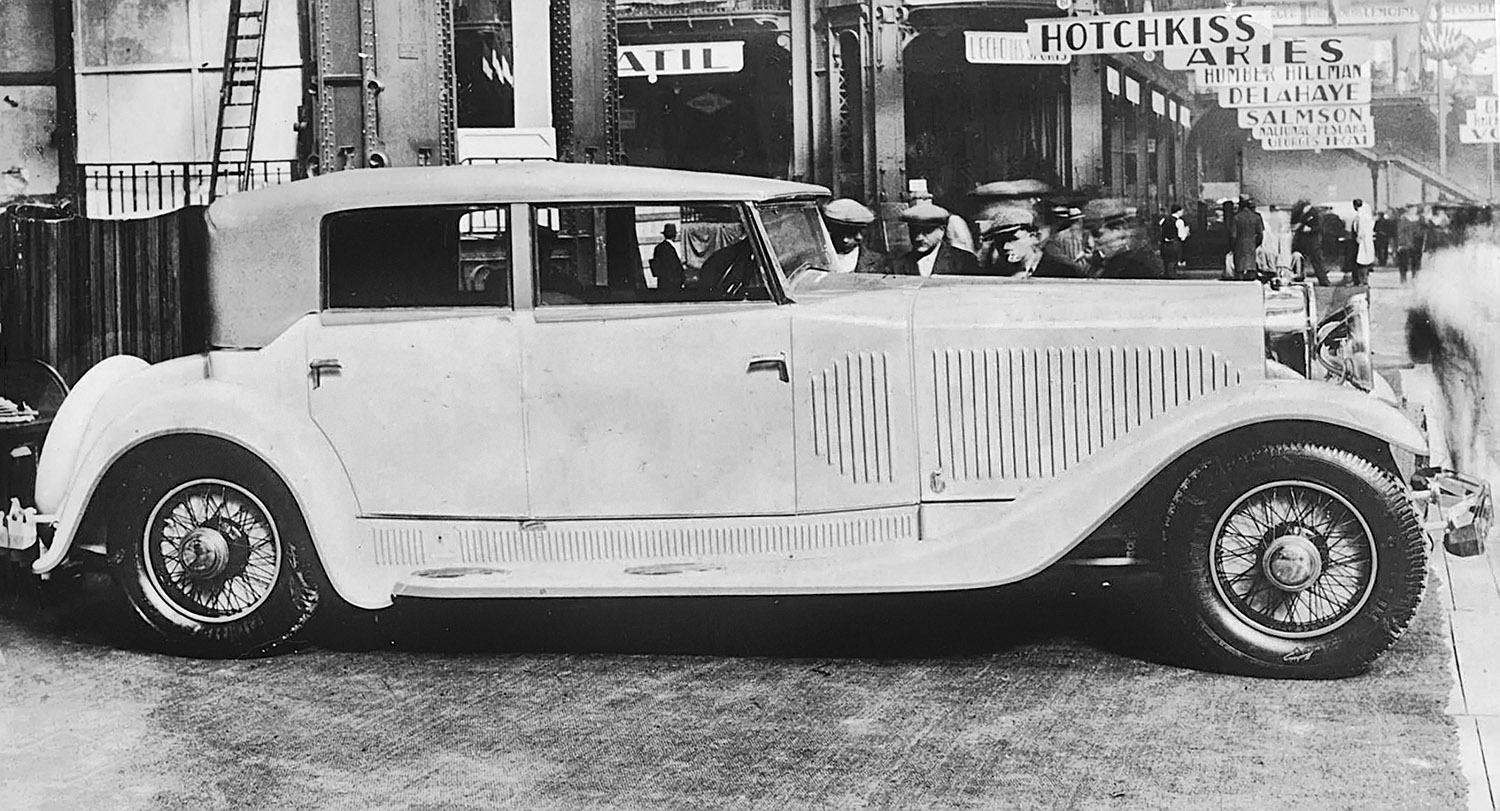
The Saoutchik-bodied Hispano J12 at the Paris show in 1931. The 13-year-old Crown Prince had to have it.
Well, we all have our tough moments. But his next car, given to him by the German government hoping to win his favor, was even more impressive, if that is possible. In 1937 Hitler arranged to have a very special Mercedes-Benz built and delivered to the Crown Prince. It was a 500K with a 5.4 engine, the body styled by Hermann Ahrens, and it was called the Autobahnkurier.
These were only two of the many exotic cars that were gifted or acquired by Mohammad Reza Pahlavi, later known as the Shah of Iran, from 1934 to the late 1970s. His mania for cars increased after the war and peaked with the purchase of the Lamborghini Miura SVJ as featured on the cover of this fantastic new book by Borzou Sepasi (see article below).
The Shah of Iran had a lot of money at his disposal, and a very well honed need for speed, (he was also a licensed aircraft pilot) obtaining the finest machines available. We know this, and we know he bought a great number of cars during his years in power. What we didn’t know was how early his passion exhibited itself, and to what depth. Mohammad Reza Pahlavi’s collection no doubt will be the focus of most reader’s attention.
Borzou could have written two books, one consisting of a history of each of the cars associated with the Royal Garages, (including many that were associated with the Shahs but not actually owned by the last Shah himself), and another book that covered the history of the royal automobiles within the context of a changing background of oil, war, emerging from a agricultural society to a modern economy and of revolution. Sepasi chose, probably wisely, to incorporate all of this material into one huge epic of 564 pages.
Grand Touring through history
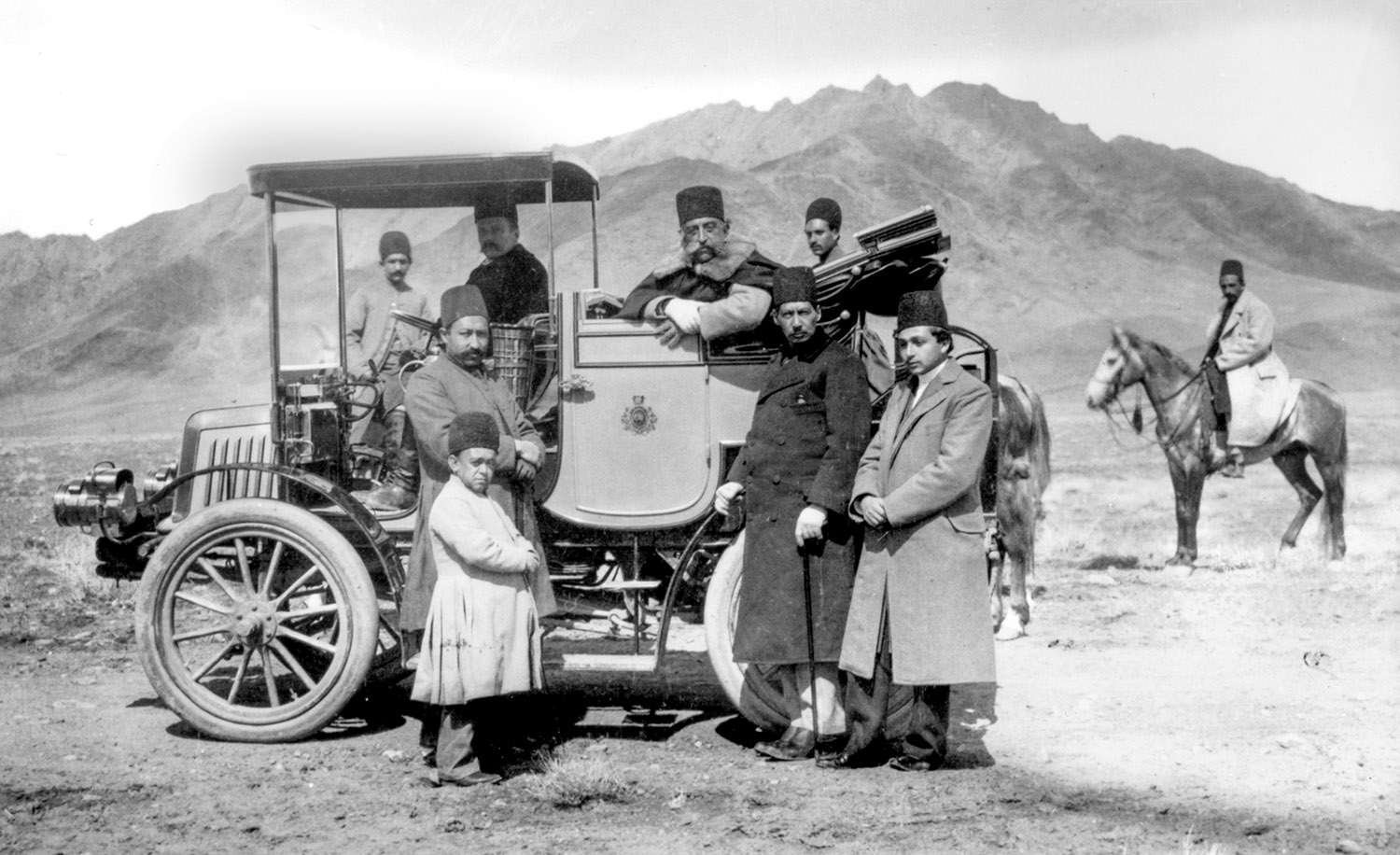
Mozaffar ad-Din Shah is the bearded fellow in his yellow Gardner-Serpollet in the outskirts of Tehran circa 1903-4. He brought the automobile to Persia while selling oil concessions.
Sepasi was born in 1978, just as the Shah was disposed, and lives in Iran today. However, he tells the story without politics or prejudice and focuses on the automotive side. In 35 short chapters, he tracks the significant events and activities of the Shahs, describing trips and ceremonies, weddings and wars by the cars, planes, or military vehicles used on the occasion: History as seen by through the eyes of the Royal Garage. Sepasi’s book lays out over 1000 photos, mostly historical, to tell the expansive story. Fortunately, the narrative is well written and above all, interesting, providing a much-needed background and context to a little-known time and place.
The love of automobiles was ingrained in the Shahs of Iran from the very beginning of the automobile age, which is why the book is entitled, “The Royal Garages of the Shahs of Iran”, i.e., plural, meaning many Shahs.
It began not with the Shah Reza Pahlavi or his illustrious father, but with an inquisitive 5th king of the Qajar dynasty, Mozaffar ad-Din Shah, who in 1900 became acquainted with the automobile during a tour of Paris, and becoming a dedicated buyer of Gardner-Serpollet horseless carriages. Oil was ‘officially’ discovered in 1908 but the Shah, despite needing the stuff for his Gardner-Serpollets, gave out huge concessions to foreign firms for the oozing black stuff, which enriched his coffers but would cause problems later on; two wars would be dependent on that black stuff and put Persia (it was not called Iran until 1935) right in the cross hairs of Britain, Russia and Germany. Incidentally, the discovery of abundant oil was made by William D’Arcy, who in turn sold most of the rights to the Burmah Oil company, which marketed the oil under the now famous BP logo. This not only stood for British Petroleum, but Benzene Pars, meaning the benzene of the Parsian (Persian) people.
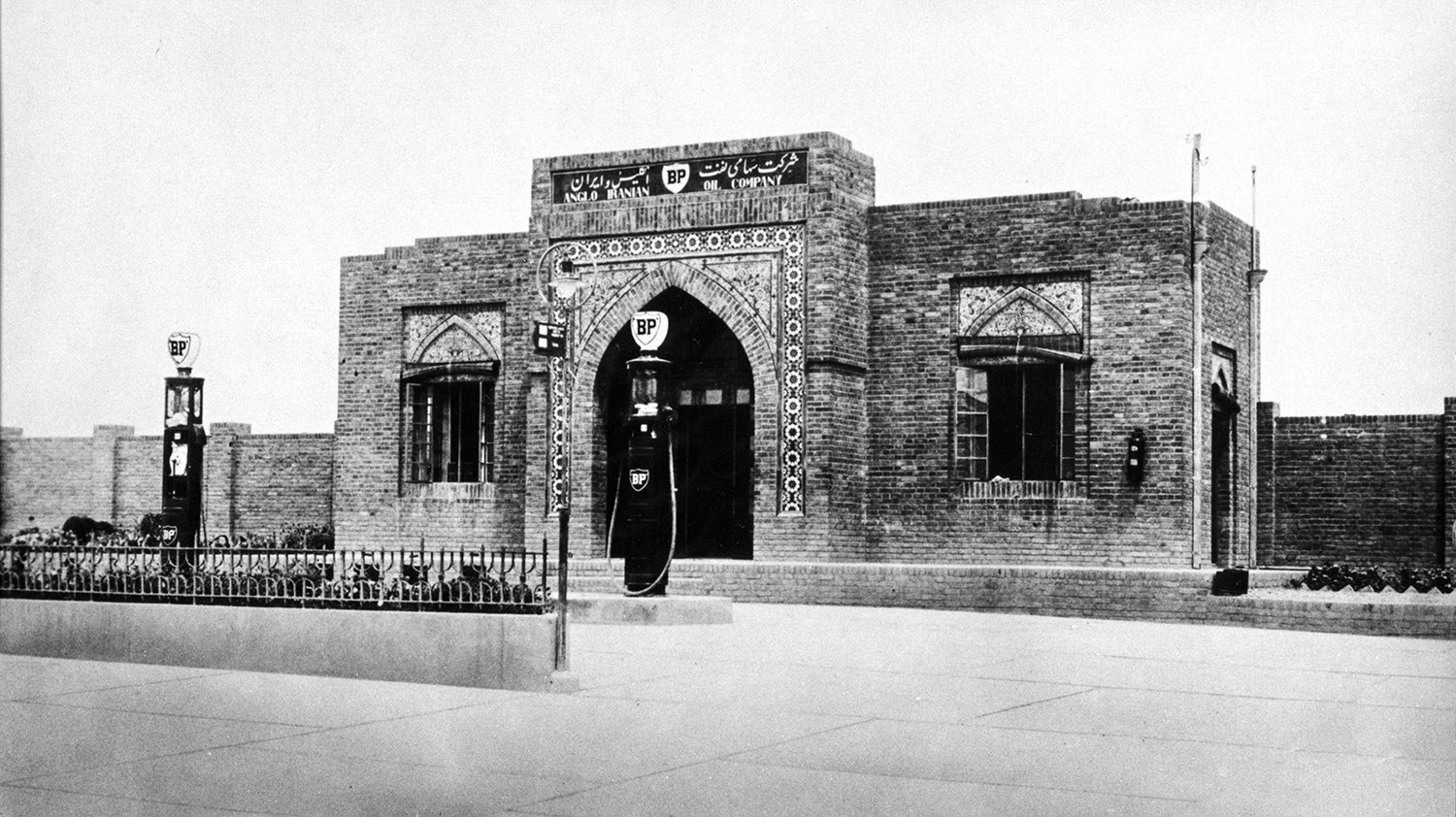
One of the first gas stations in Persia, built by the Anglo-Iranian Oil Company, with Islamic architecture. BP meant Benzene Pars in Iran.
World War I allowed the ascendancy of Mohammad Reza’s father, Reza Pahlavi, born of poor stock but brilliantly rose through the ranks of the military to become prime minister and by 1925 masterminded a palace coup that deposed the Qajar dynasty. Reza Shah Pahlavi died in 1944, but not before preparing his son for ruling this increasingly important country.
We know you are eager to know more about the Maseratis and Ferraris that were owned, then stored in the fabled garage of the Shah. You will not be disappointed. They appear in each chapter as the story unfolds, and in addition to the historical narrative, Sepasi creates a handy guide to the cars of the Shahs as Appendix 1, ‘An alphabetical guide to the known fates of the vehicles featured in this book after the revolution.’ So while reading the main narrative, one might find a mention of the Shah’s Bugatti T 57C Vanvooren, and one can go to the Appendix and find more information about the Bugatti and where it is today. And one can also find all references to any car in the index. Chassis numbers are provided in most cases.
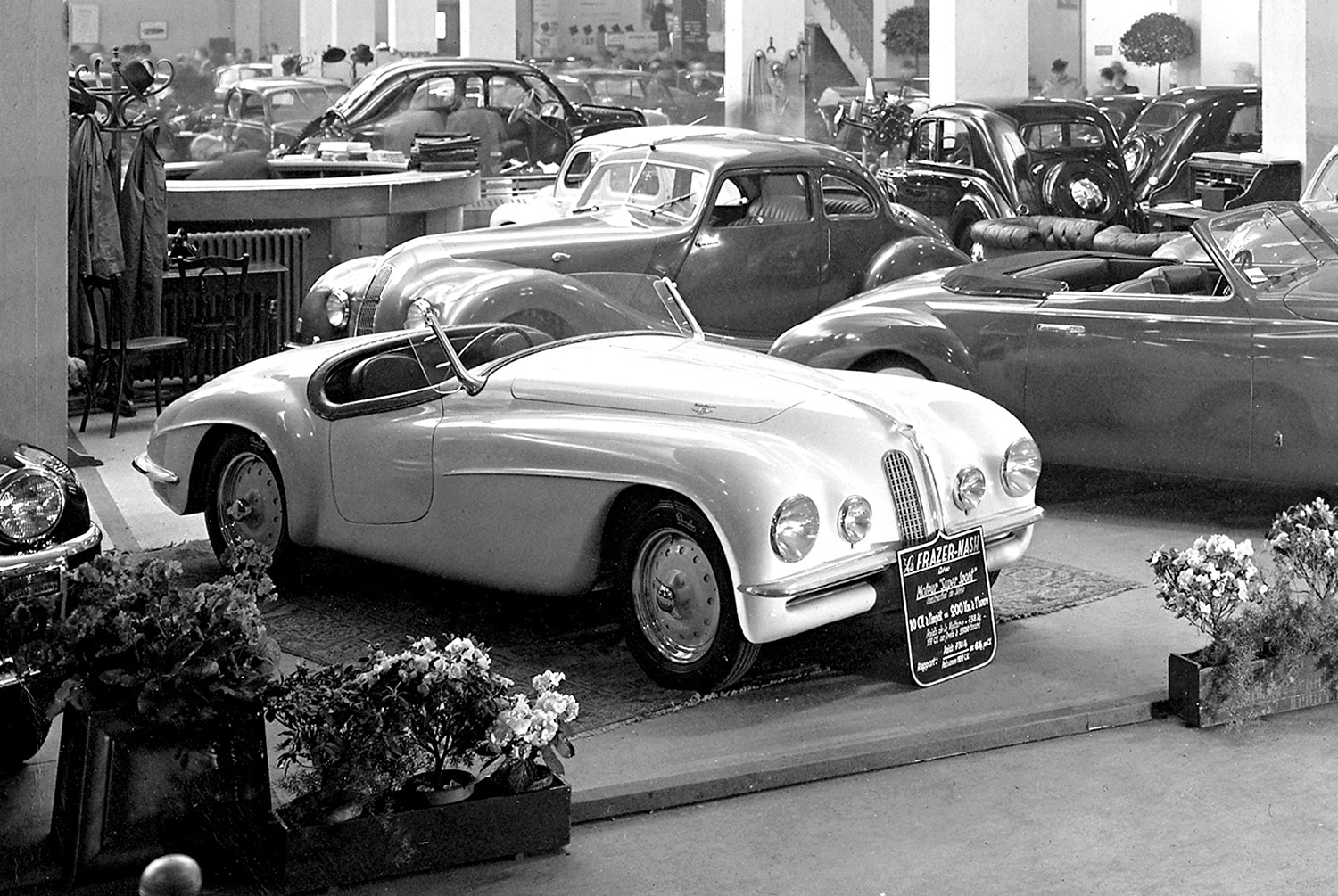
Following the war, Mohammad Reza Pahliva was able to purchase more cars that please him. On a visit to Great Britain in 1948, he toured the Fraser-Nash company and ordered a High Speed model, later rebodied by Touring as a very attractive spider before being delivered to the Shah.
Appendix 2, Honorable Mention, addresses “Vehicles not covered in this book but deserving coverage” includes an Alfa 6C 2500 PF Super Sport believed to be chassis 915.773, Bizzarrini 5300 GT possibly owned by the Shah or a close relative, a Franay Cadillac, a Ghibli coupe, the 1960 Plymouth XNR Concept car, and many others. The author does not believe that any of the cars in this section were actually owned by the Shah.
Whatever their drawbacks, the two Pahlavis, reigning more or less consistently from 1925 to 1979 (WWII aside) created roads. railroads, encouraged industries and provided the ancient country an economy that improved the lives of millions. We might add, with hindsight, that even Reza Shah’s most extravagant expenditures for self were smart investments, though that could not be foretold in the 1970s.
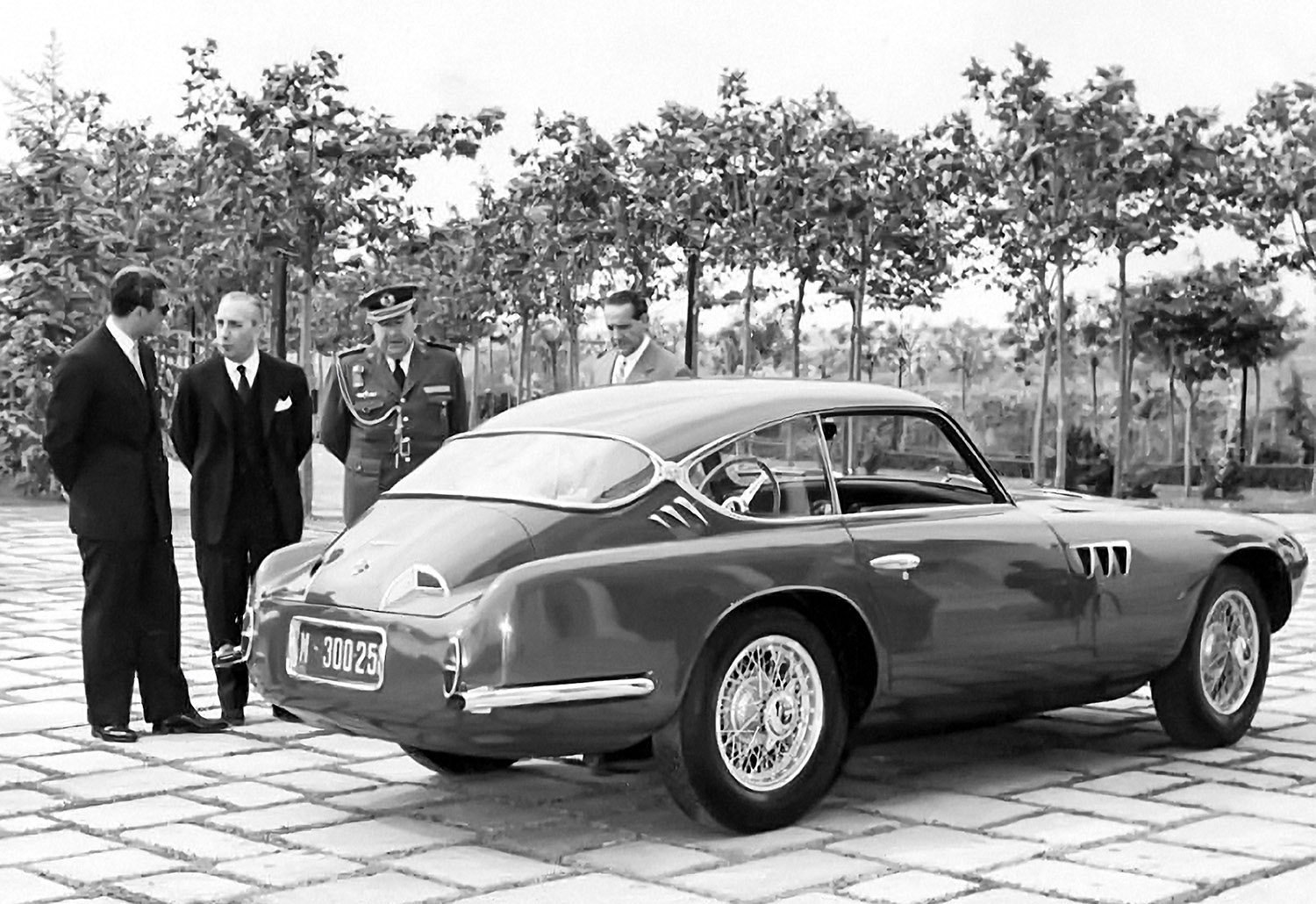
Another lesser known car owned by the Shah was this Pegaso, given to him in 1957 by the Franco regime, smartly recognizing the Shah’s interest in fast cars. The four-year-old Pegaso had already been driven from NY to LA, then restored by the factory and given to the Shah.
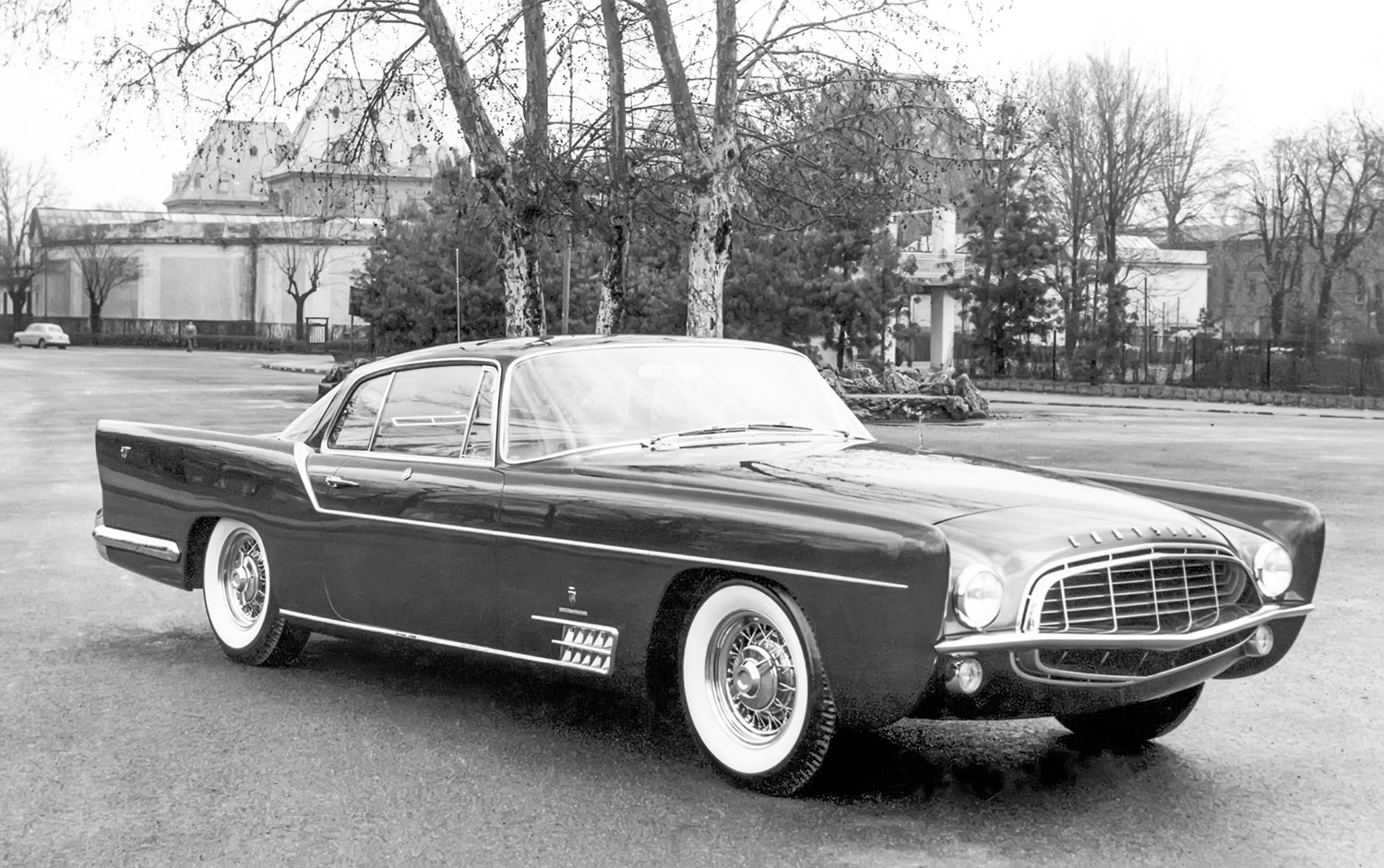
Always a loyal fan of Chryslers, in 1955 the Shah purchased this unique K 300 Ghia Special with leather interior, wood dash, gold plated trim, Hi-Fi phonograph,and a refrigerator. It also inspired the car below.
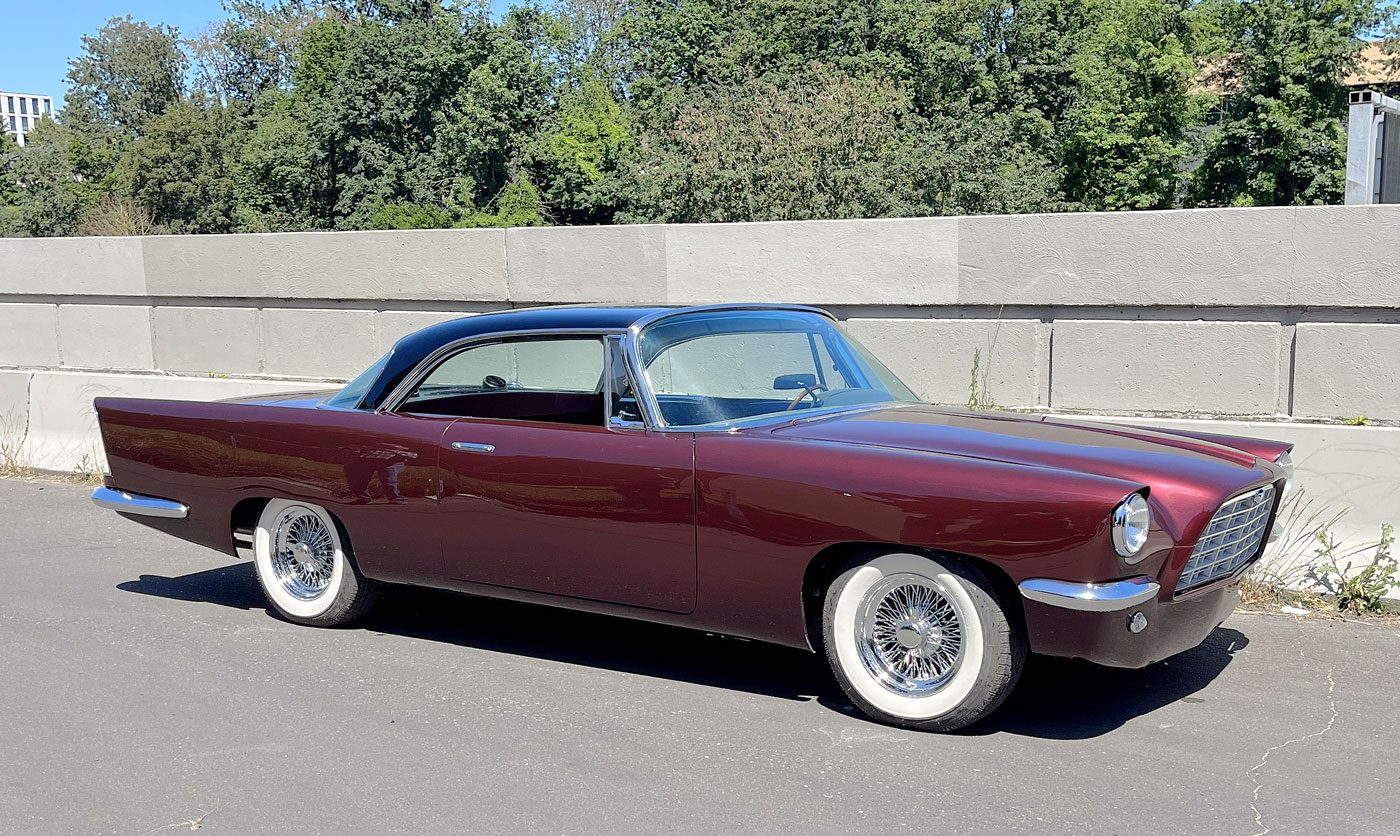
This is a sidebar and not part of the book. However, we couldn’t help but include Tom Black’s very special Chrysler, which looks very similar to the Shah’s Ghia above. It happens that it was the Shah’s Ghia Chrysler that inspired Tom to create, from scratch, his own version of the Shah Ghia. Hopefully we’ll have a full story about Tom’s recreation in the near future. Photo by Mark Wigginton.
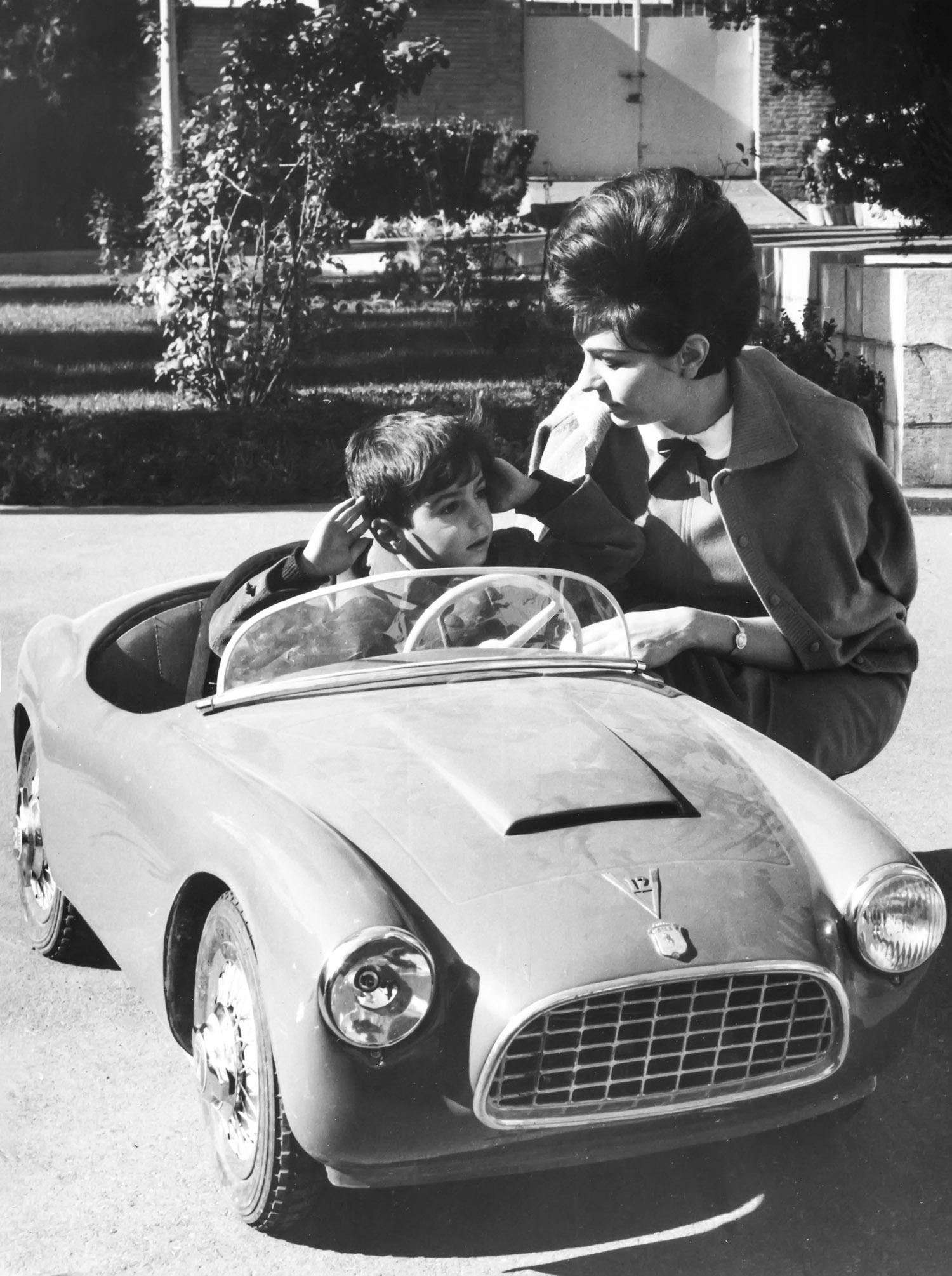
As soon as possible, the Shah ensured that his first son, the Crown Prince, became interested in automobiles. He had four of these Bimbo Racer V12s, an electric car with working headlights, a three speed gearbox, four wheel brakes, hand built by S.I.L.A. in Turin.
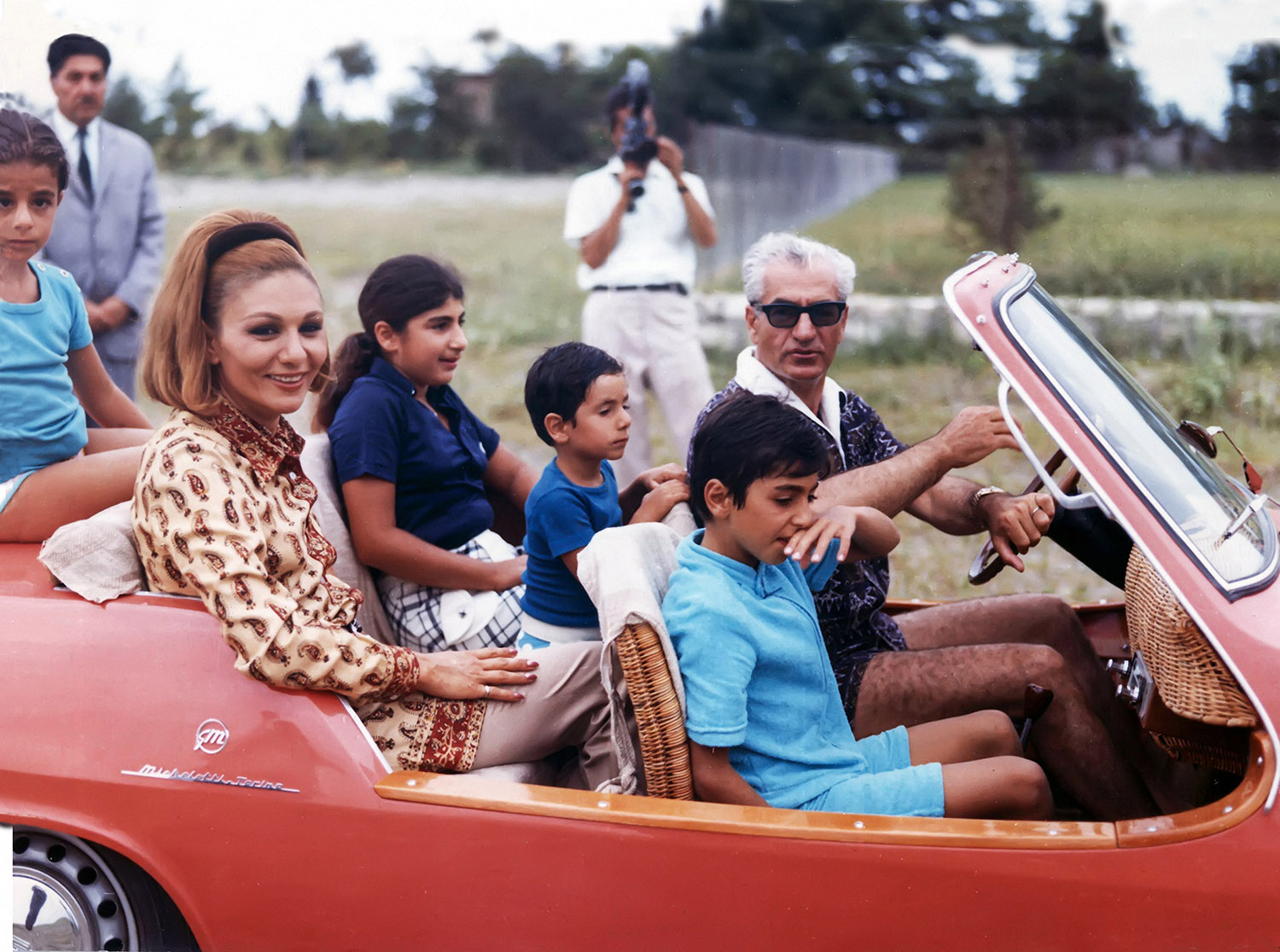
The Shah enjoyed his family, fitting them all into a Fiat 850 Shellette, bodied by Michelotti, in the early 1970s.
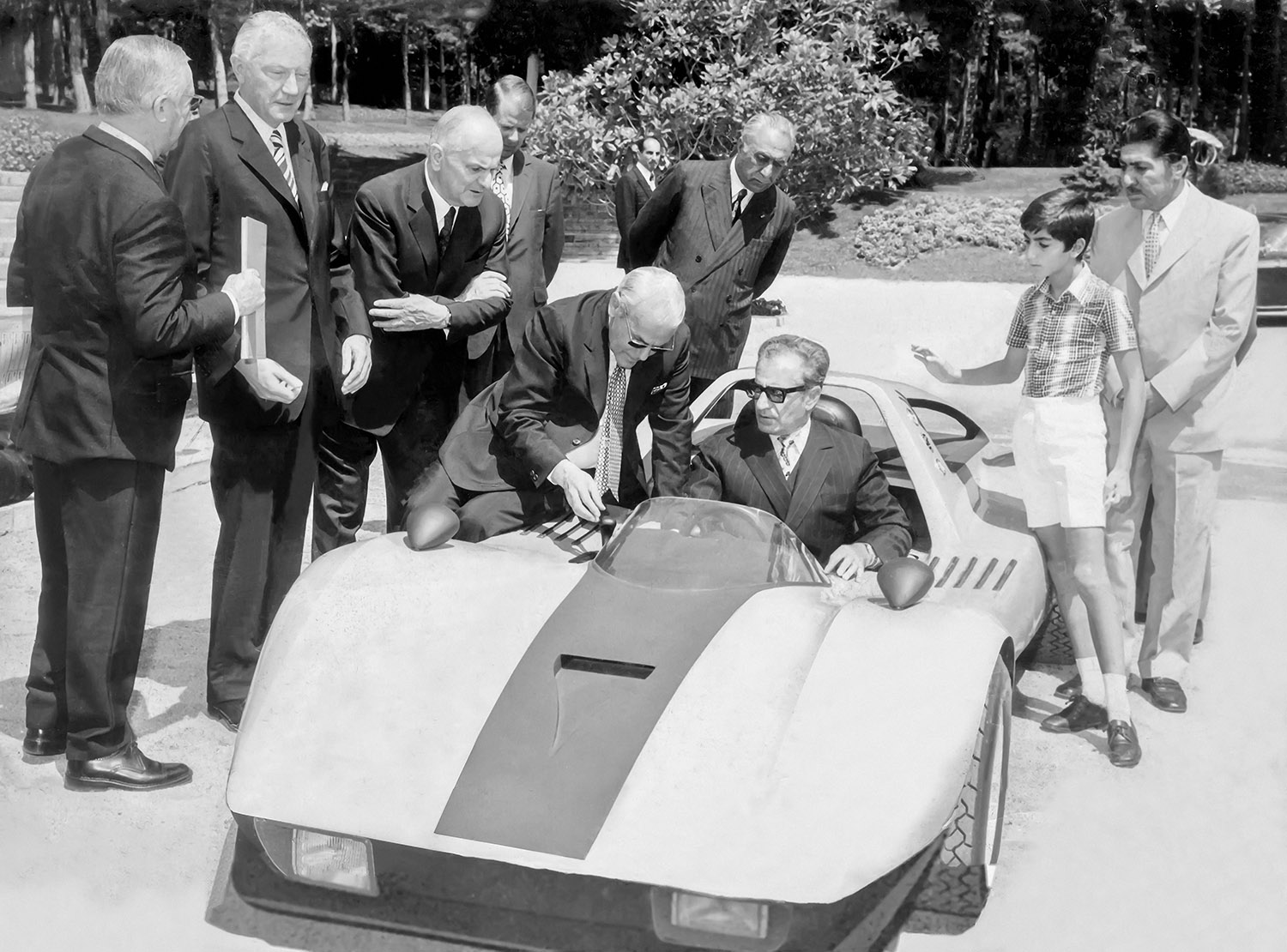
Not to be outdone, a Mercedes-Porsche-VW project created this very special single seater sports car for the Crown Prince in 1972. The Crown Prince is on the right as his father test drives the new car after delivery.
NOW AVAILABLE WORLDWIDE!
Click here to order
Fit for a King: The Royal Garage of the Shahs of Iran
by Borzou Sepasi
Hard cover with dust jacket
564 pages 230mm x 280mm
1,046 photographs
ISBN: 9781854432926
Our Price: $150.00
You’ll earn 20 points
Shipping Costs: FREE SHIPPING TO USA AND UK.
__________________________________________________________________
By Pete Vack
All photos from the book, Fit for a King, The Royal Garage of the Shahs of Iran
Like many of us, as a boy Borzou Sepasi would go to the local newsstand with his father and ask if he could purchase one of the foreign car magazines such as Autocar. He would take it home and painstakingly translate the text one word at time, devouring the information about the rare cars he could only see in the pages of these magazines. Like many of us, Sepasi became an expert in a field where there were few, a pioneer on the subject of European classic cars. He became a car guy, a true enthusiast, a seeker of knowledge, and finally a motoring journalist and award-winning author. But unlike all of us, Sepasi was born, bred and educated in Tehran, Iran in 1978 just at the beginning of the Islamic Revolution.
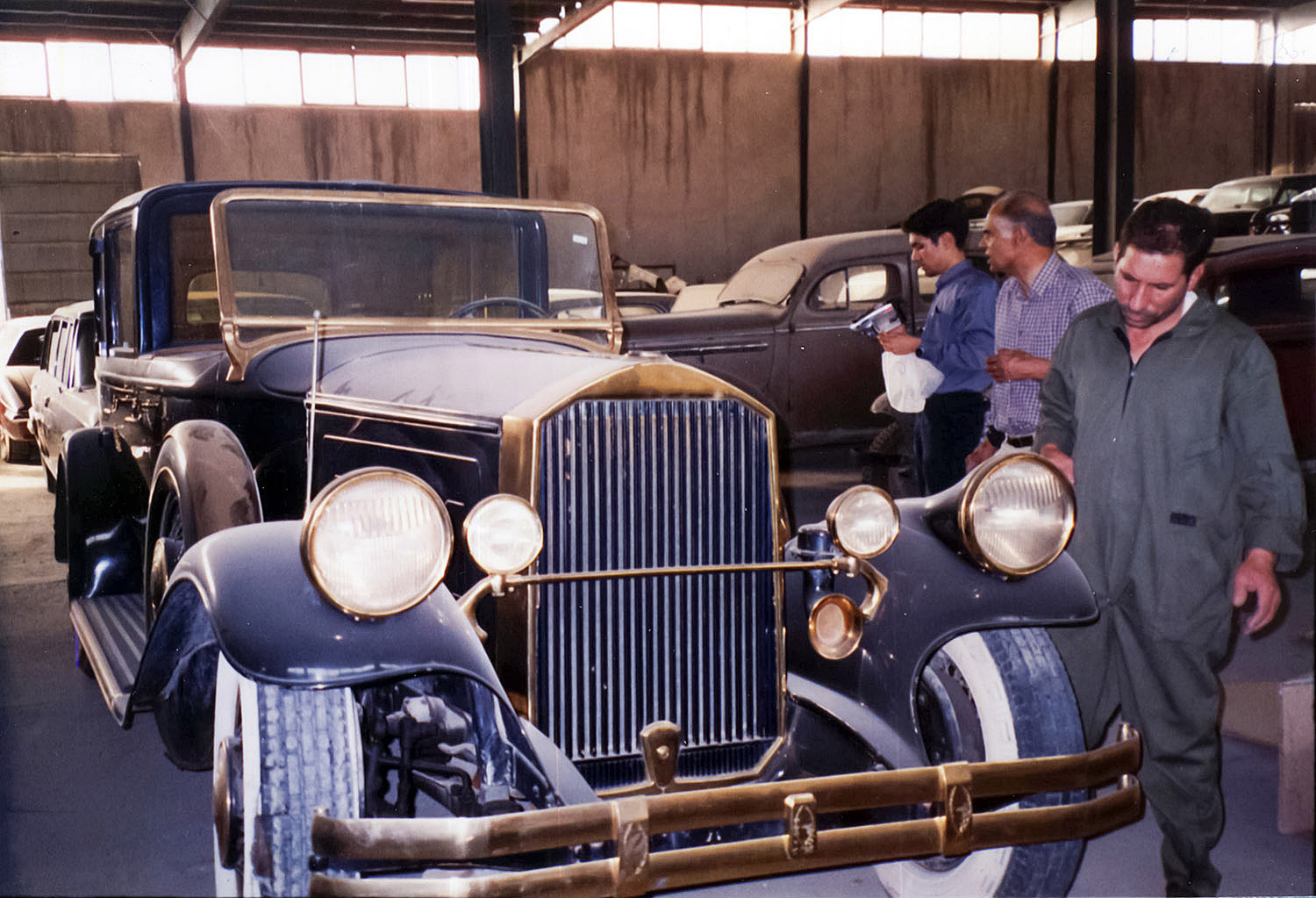
Borzou Sepasi, far left, assisting authorities of the Bonyad Mostazafan with identifying the Shah’s Pierce Arrow Model A, which was originally purchased by the Shah’s father, Reza Shah, founder of the Pahlavi dynasty.
Wait, did you say Iran? While an interest in cars has led us to learn a lot about different countries, we know virtually nothing about Iran, and what we do learn from the media is often negative. A brief internet search revealed that Iran is very much a modern country, the people are polite, welcoming, hard working and interested in Western pop culture. We discovered an interesting article written in 2018 by Kim Hjelmgaard in USA TODAY that told us a bit more. “The highways and service stations are modern. The water is drinkable. Air conditioning makes average summer temperatures of more than 100 degrees bearable. Bearded men (hipsters, not religious zealots) can be found in cafes. North American social media software is widely used, and smartphones are everywhere. Access to Western music, movies and TV shows is made possible through the use of virtual private networks, or VPNs, that enable Iran’s internet and app users to remain anonymous and secure online.”
Other sources revealed that, surprisingly, Iran has a healthy vintage car culture, not only consisting of a broad array of American muscle cars, a legacy of the close ties the US and Iran once enjoyed, but also a smattering of European classics ranging from a Mercedes 300SL Gullwing to a Fiat 125 Samantha Vignale, and everything in between. The country has a race track in Tehran designed by Hermann Tilke for both on course and off-road events, with the hope of one day becoming an F1 venue. We found that Iran has an automotive industry dating back nearly seven decades and that there are several producers of Iranian cars, the most popular are made by Iran Khodro and Saipa, and roughly 1.5 million cars are produced each year. Together with France’s Peugeot and Renault, these four makes dominate the market. Mercedes and BMW provide the transportation to the wealthy upper class, but they are not common. (Not many know that before the revolution (and a short time thereafter) the Cadillac Seville was once locally assembled and is highly sought after by local collectors.) Tehran’s traffic jams are monumental and most, if not all the cars…millions of them…are white. Most of the population speaks Farsi, and only the very well-off do much traveling outside the country. That’s Iran today in a nutshell.
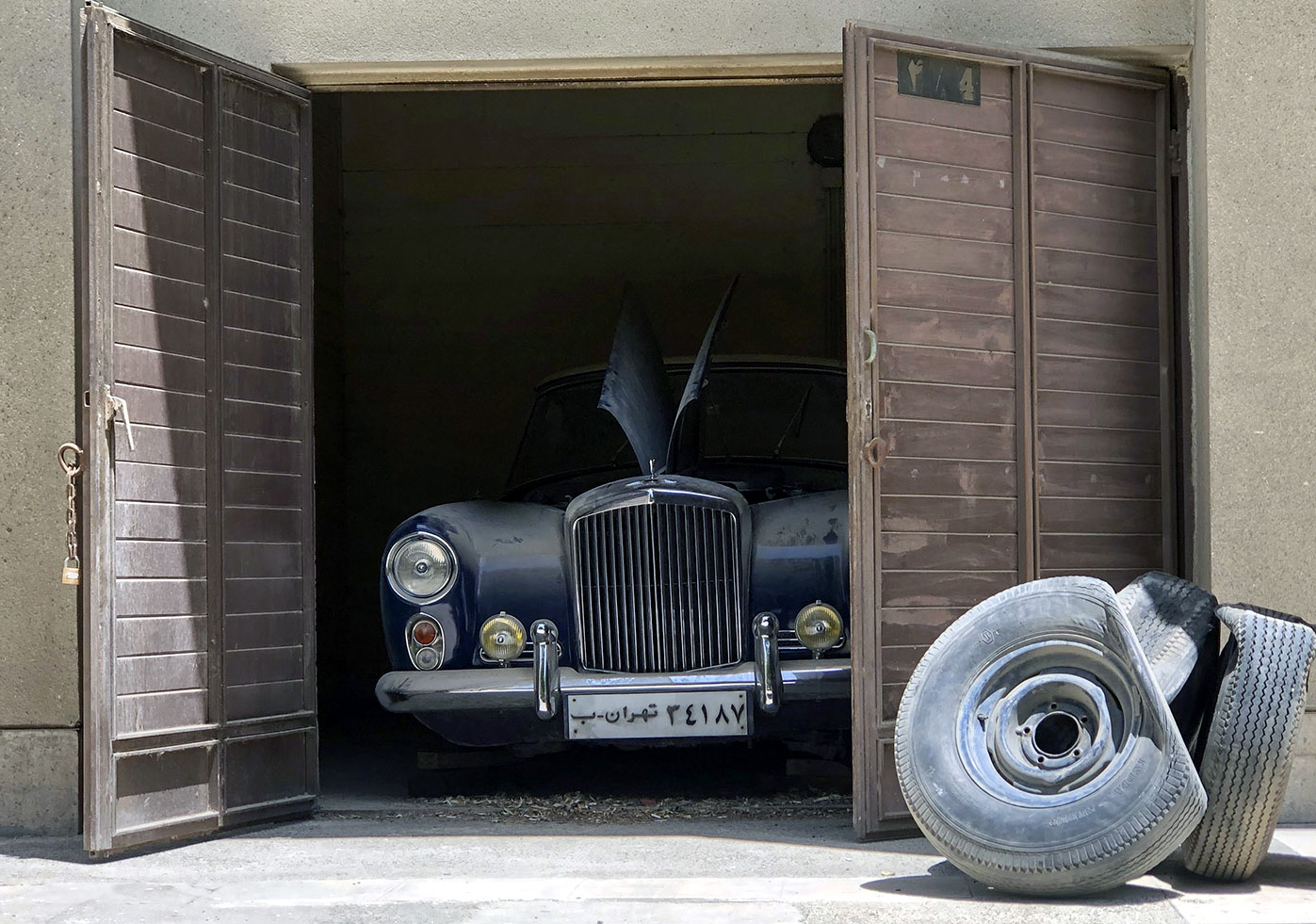
The Shah’s 1960 Bentley S2 Continental Drophead Coupe sees the light of day after almost 40 years. After the revolution, the car was stored away by its owner until 2019. Sepasi helps not only id the cars but tracks their history before and after the Islamic Revolution of 1979.
From that background comes our young car guy, filled with energy and intelligence, who has spent the last 20+ years researching the amazing car collection of Iran’s last Shah. We don’t learn about this from modern sources. He connects to us not via the Internet, blogs, websites or Facebook, or to the more traditional magazine that he is associated with. The portal to both Sepasi and the Shah’s cars is a new book by Dalton Watson, Fit for a King, The Royal Garage of the Shahs of Iran. (Read review)
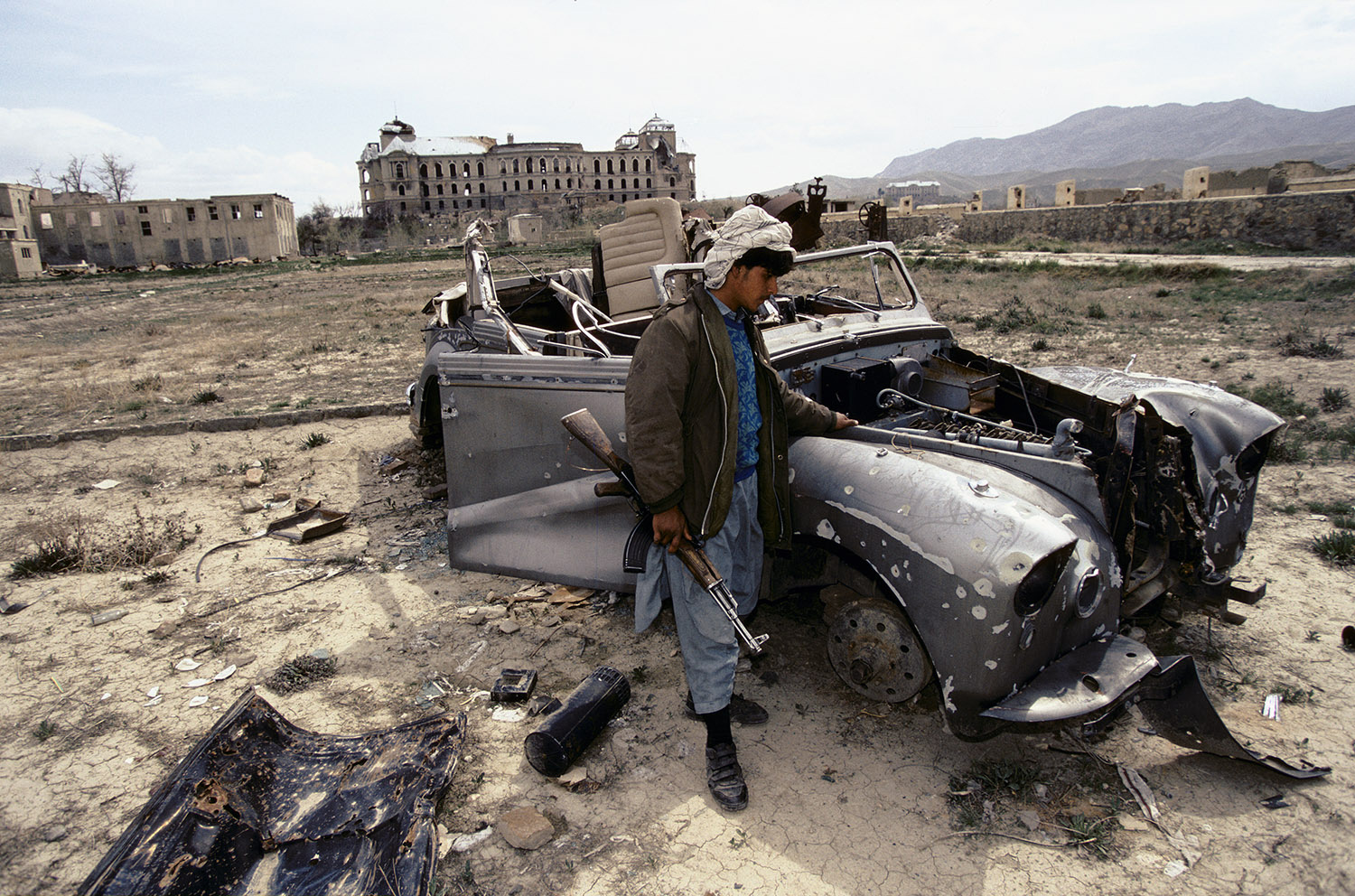
Some cars were not owned directly by the Shah of Iran. This Daimler DK-100 by Hooper was owned by the King of Afghanistan, and used for target practice, a victim of the revolution. It was eventually scrapped.
Sepasi’s journey began with those car magazines he found at the newsstand. In the early 1990s, he found an Autocar dated May 18, 1988, which had a classified ad for a Maserati Ghibli purportedly owned once by the Shah of Iran. Sepasi writes in the book’s introduction, “Having heard many stories of the enormous wealth that the Shah had at his disposal during his reign, I concluded that there must have been other cars like the Ghibli as well. It was from this point that my quest to uncover the history of the royal cars of Iran started.” There were a lot of false starts, however, and it wasn’t until Sepasi was attending Tehran University that he was able to begin serious and comprehensive research on cars he believed to have been owned by the Shah. In 2002, at the age of 24, Sepasi wrote an article about the cars of the Shah, which was published in one of Iran’s highest circulation newspapers. He left his email address at the end of the article. That’s when things really clicked.
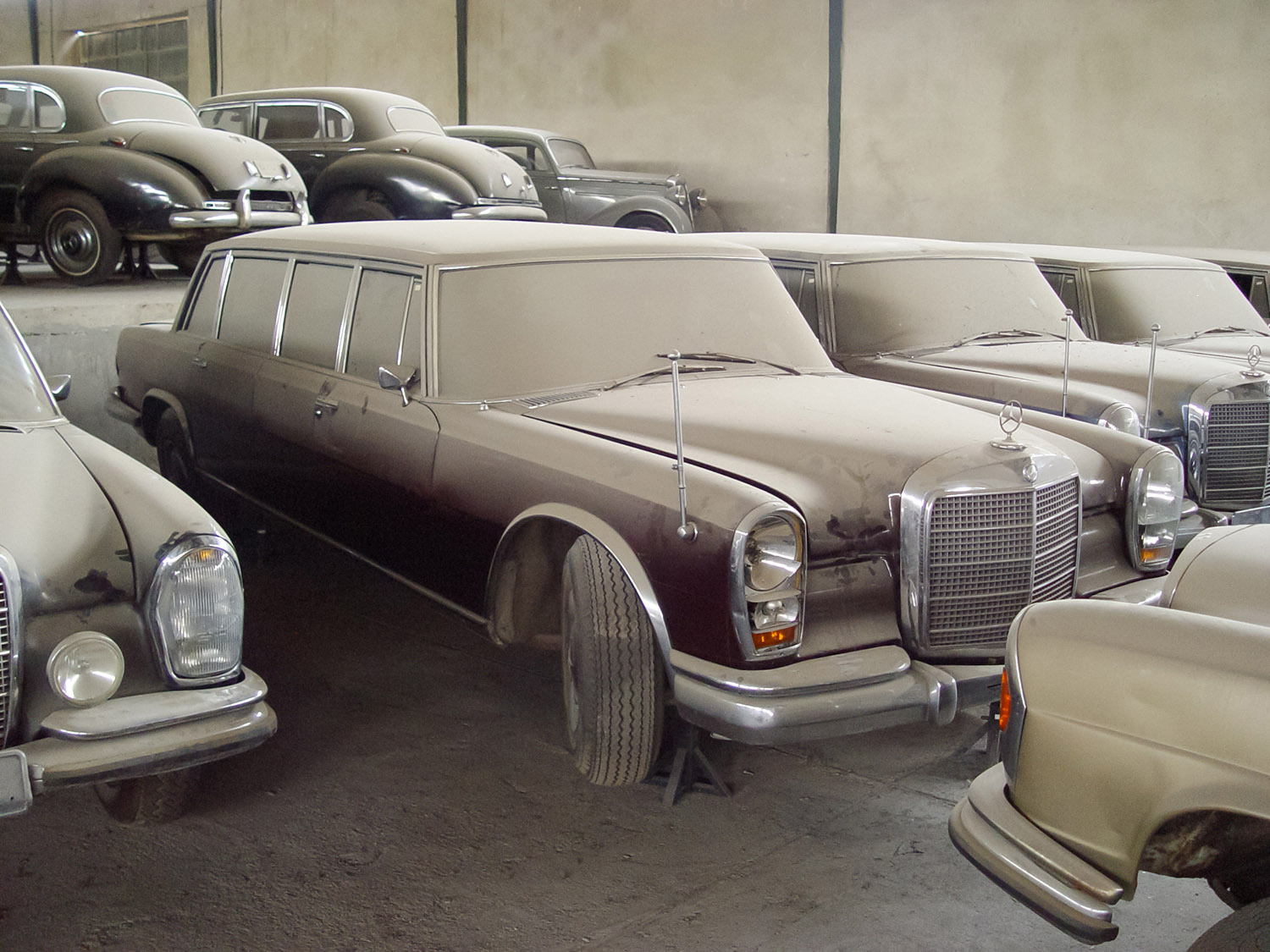
Part of the world’s largest collection of Mercedes-Benz 600s found with the Boynad Mostazafan was the Queen Mother’s 600LWB. Sepasi found the original documents supporting this claim years later in the archives of the Saad Abad Palace.
He received an email from “…a gentleman claiming to be the head of a soon-to-be established museum to house the cars which were in the hands of the Bonyad Mostazafan, the organization mandated with managing the property and assets of the former Shah.” Said gentleman needed help in identifying some 180 cars in his care (not all belonged to the Shah however, but also his associates, ministers, relatives, etc.). He invited Sepasi to visit the warehouse where the cars were kept. This revealed many Rolls-Royces, Mercedes, Ferraris and a Mercedes-Benz 500K Autobahnkurier, all covered in layers of dust.
Still, many of the Shah’s true treasures were hidden in a variety of places and each one had to be accessed and inventoried. But things were not easy. Forty years after the Shah was deposed, there is still sensitivity about the rule of Mohammed Reza Pahlavi, and often Sepasi was faced with suspicion regarding his search for photos and information. He had to convince many that his efforts were for a nonpolitical historical effort.
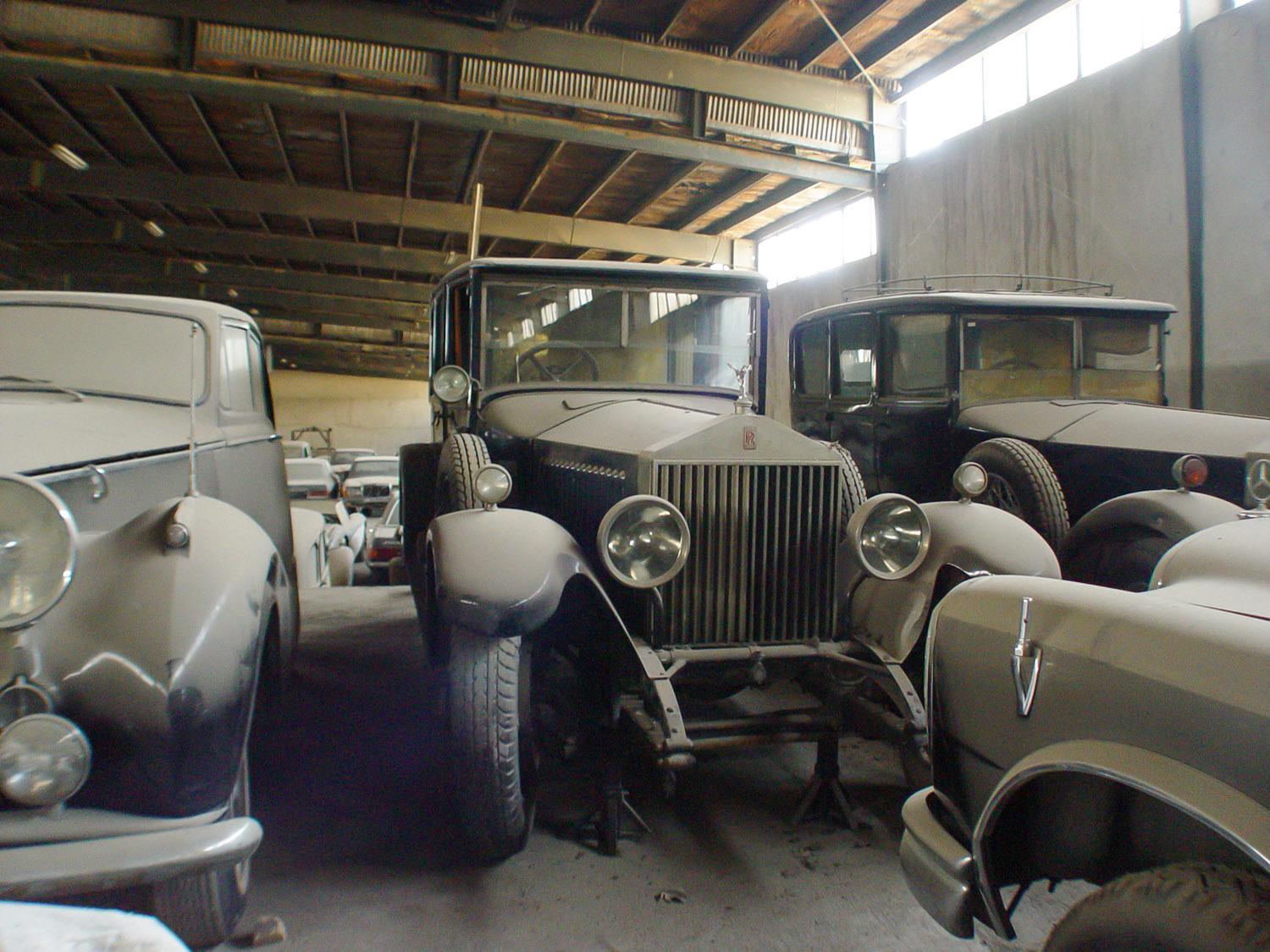
Another dust catcher found in one of the Bonyad Mostazafan warehouses was this Rolls Phantom I owned by the Shah’s father. It remains hidden away from the public.
His long years of studying European and British cars often paid off. A chance meeting with a particular manager resulted in seeing a small album of the Shah’s cars under his care. Writes Sepasi, “Having earlier uncovered the list of all the Rolls-Royces sold to the royal court, I spotted a Rolls-Royce Silver Cloud III, known as ‘Chinese Eyes’ among the cars in his photo album. When I recited the VIN number by heart, the manager immediately granted me first-hand access to the cars in their possession.” He also volunteered his services at no cost to the Bonyad Mostazafan, and was also slowly able to gain access to the archived photos in the Saad Abad Palace, as well as first hand access to the cars still remaining some thirty plus years on in the Shah’s parking garage at the Niavaran Palace.
And so, for a period of twenty odd years, Borzou Sepasi’s life became a series of wonderous discoveries, magical cars, carriages, aircraft, and even special railway cars designed for a Persian king, all in his own backyard. The joy, the excitement, the accomplishment, the research, must have been an incredible high. Along the way, Sepasi began to write for the Iranian Machine Magazine, and has since contributed over 200 articles. He was named Iran’s top automotive writer in 2008. This was followed by the publication of his first book, A Pictorial History of Car Advertisements in Iran, and in 2016 Iran Royal Garage was published and awarded a Nicolas Joseph Cugnot award by the Society of Automotive Historians.
Historian and author Peter Larsen introduced Sepasi’s work on the Royal Garage to Peter Glyn Morris at Dalton Watson, which resulted in the book Fit for a King. Sepasi would like to thank his friend Ramin Salehkhou, who heads the Historical Vehicle Association of Iran who in turn brought on his colleague from FIVA, Gautam Sen (no stranger to VeloceToday) on board; both of whom were instrumental in assisting Borzou in bringing the book to print in English. Furthermore, Borzou is indebted to and his wife Mahnaz Beedel and son Yara who gave up much of their personal time in order to allow Borzou to bring this book to fruition.

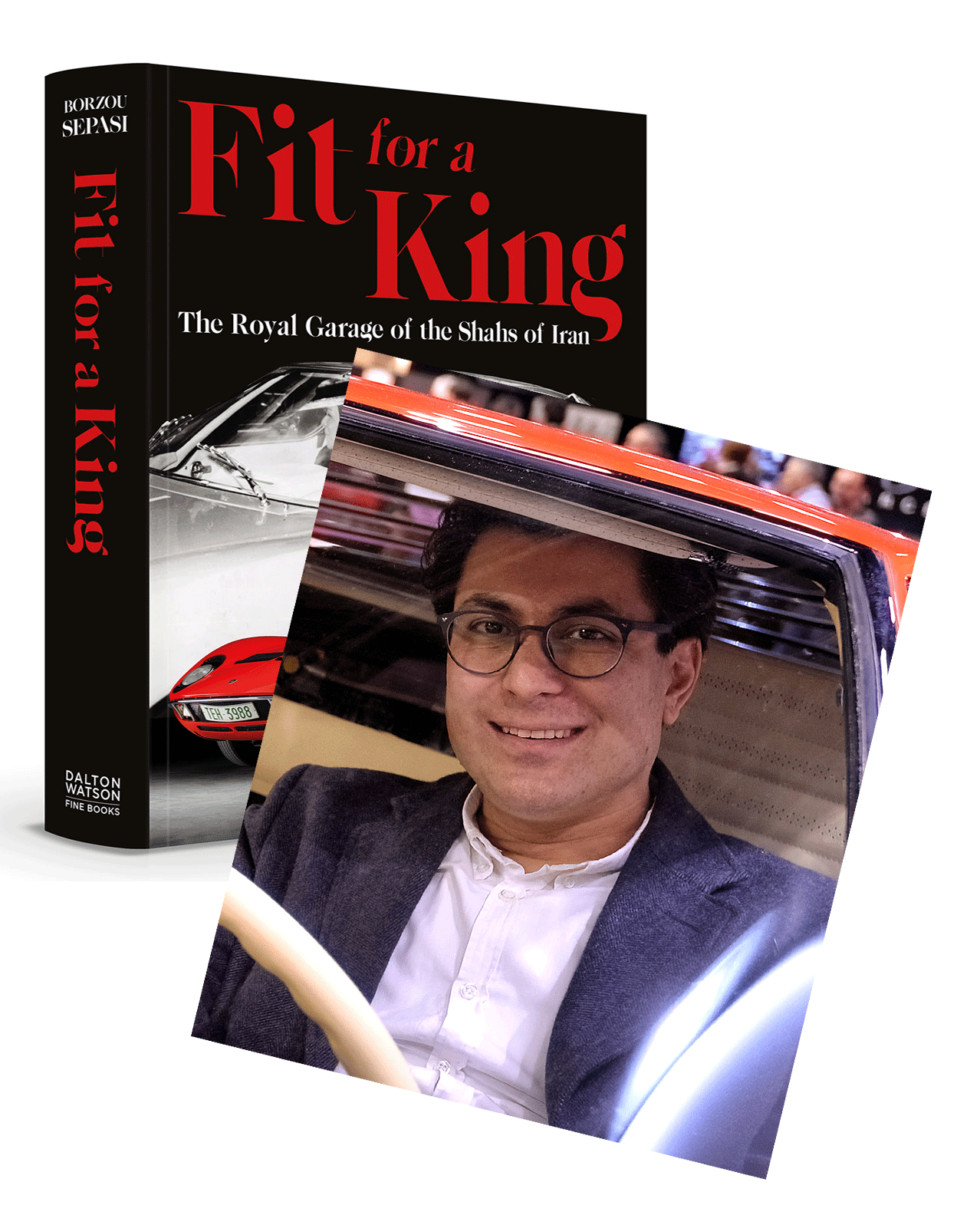
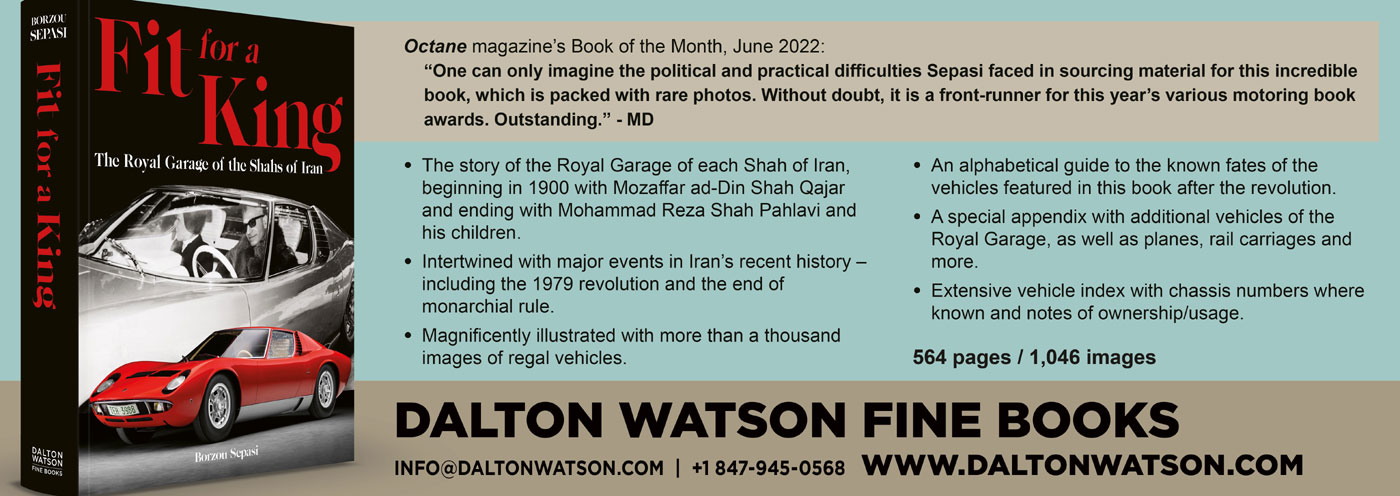
around june ’52 i bought a ‘true’ magazine which had an article by somebody who accidentally wound up visiting garages of various indian maharajahs. i remember one mechanic telling him the cars were dusted and perhaps started every month or so, but hadn’t been driven for years. wasn’t there a book about these collections a few decades ago?
Ton Ottevanger from Holland says:
about 20 years ago I bought an Alfa Romeo 2600 Deluxe OSI with chassisnumber 0001 and had been the property of the Shah of Persia.I bought it in London and sold it to Germany.
Wandering into an exotic car garage in Arlington, VA in the late 1970s or early 1980s, I happened upon a Maserati 5000 GT in navy blue, with that distinctive snout. The Shah of Persia model, unmistakably. Apparently, three were constructed to this design, so I don’t know that this was actually his car, and there was no one around to ask, but I felt like I’d stumbled upon a goldmine.